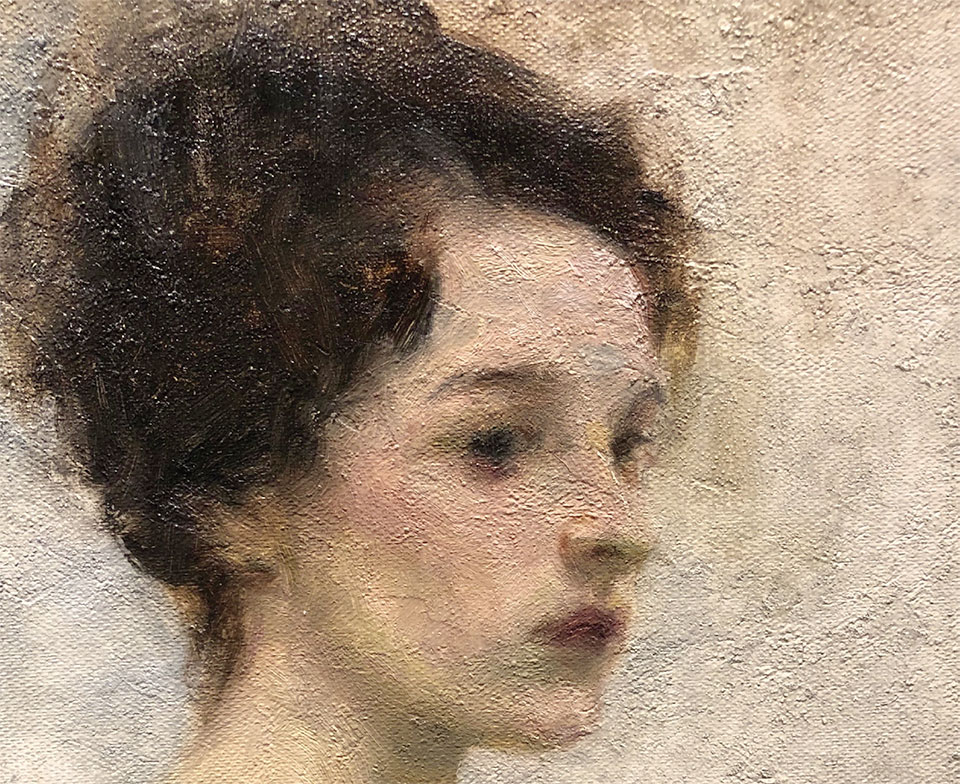Uncover Your Sensibilities
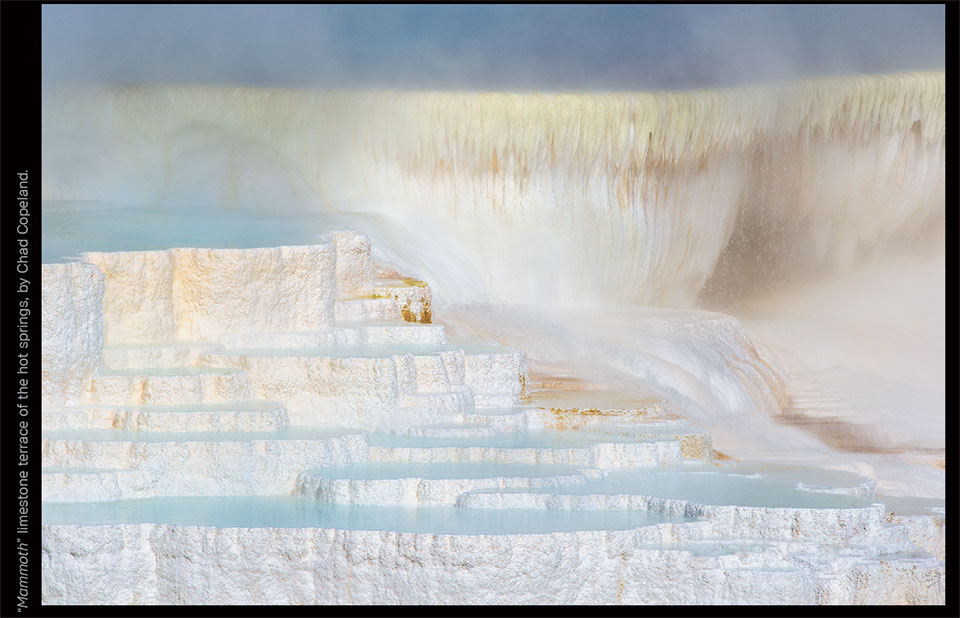
As Bend, Oregon, grows and matures, its art scene has grown with it to become a celebrated part of the community. Rooted in the city’s core culture, the High Desert Museum, the Mockingbird Gallery, and newcomer, the Copeland Gallery, are on the pulse of Bend’s art world, exhibiting notable artists and works that contribute to making Bend’s high desert locale an exciting place to live. The High Desert Museum will present exciting new exhibitions this season including Infinite Moment: Burning Man on the Horizon, on display through October 4, 2020, as well as its annual Art in the West juried exhibition and fundraiser. Celebrating a 30-year milestone as a Bend gallery, the Mockingbird Gallery will also present several exhibitions this spring and summer as well as through the fall, which will include its 30th Anniversary Celebration with a Purchase-By-Draw group exhibition and sale featuring over 50 artists. A catalog will be printed for this special occasion. At the Copeland Gallery, enjoy Chad Copeland’s photography and his uncanny ability to capture infinite beauty through his journeys and adventures around the globe. As a master of the lens, Chad Copeland shares his images, which explore untouched nature and extreme locations that very few people ever see for themselves. Peruse the following pages and discover Bend’s art community and the artists who bring their visions to you.
Mockingbird Gallery
Behold a Celebration of Western Art
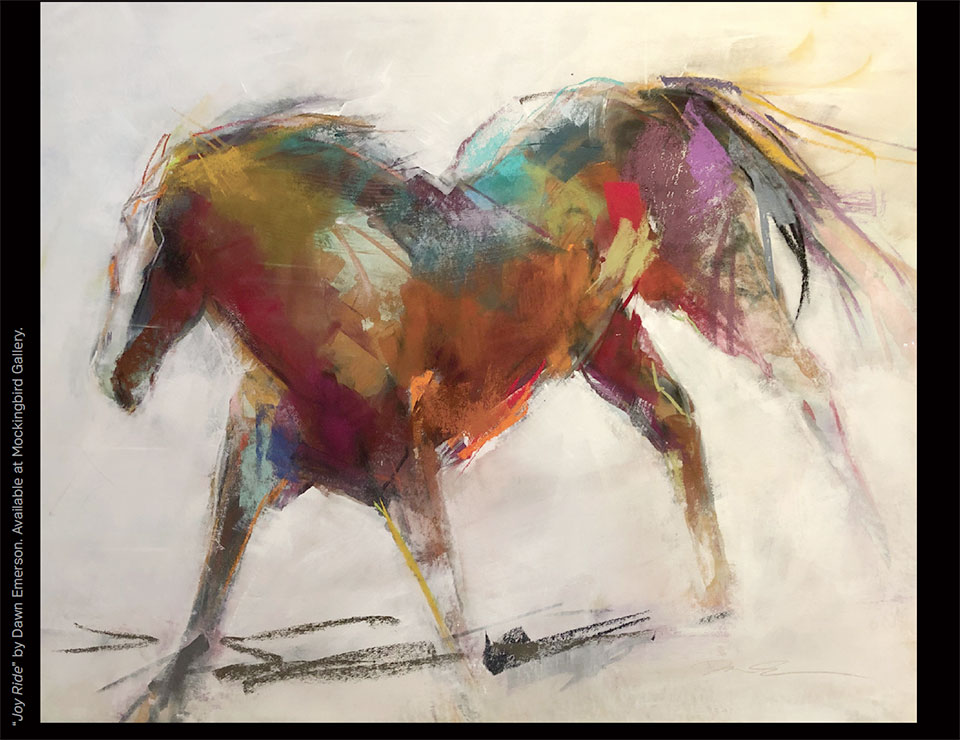
When a community is booming, fine art and artists can benefit, which, at the moment, happens to be the case in Bend. In the heart of downtown at Wall Street and Minnesota is Mockingbird Gallery, which not only has its finger on the pulse of Western fine art in the Pacific Northwest, but is also a nationally revered fine art gallery with a rich legacy for artists and collectors, especially those in Central Oregon and Portland.
“Exposure creates opportunity for artists,” says Jim Peterson, owner of Mockingbird Gallery with his wife, Nathalie. “Right now, Bend is a thriving marketplace. It’s great to be here as a fine art gallery and be part of a community that is growing in a positive direction. It’s exciting.”
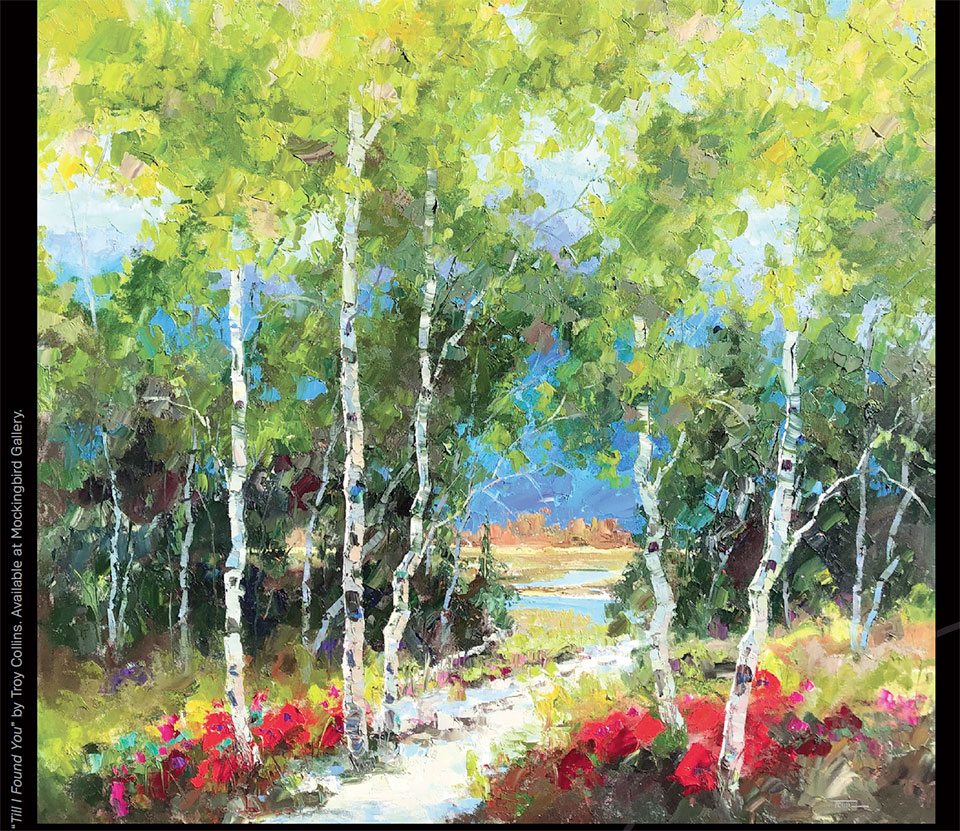
Jim Peterson began his foray into the art world at 20 years of age while living in Arizona, when he went to work for the May Gallery, a prominent Scottsdale gallery. He learned the ropes of a successful art gallery, and was also surrounded by highly collectible and notable Western art. “It was part of the territory, especially if you were learning the art business and happened to be located in Scottsdale,” says Jim. “I was exposed to wonderful examples of Western art, and it certainly has become part of my DNA. As a gallery, in Bend, Oregon, we’re proud to offer a wide variety of diverse and nationally celebrated as well as highly recognized artists.”
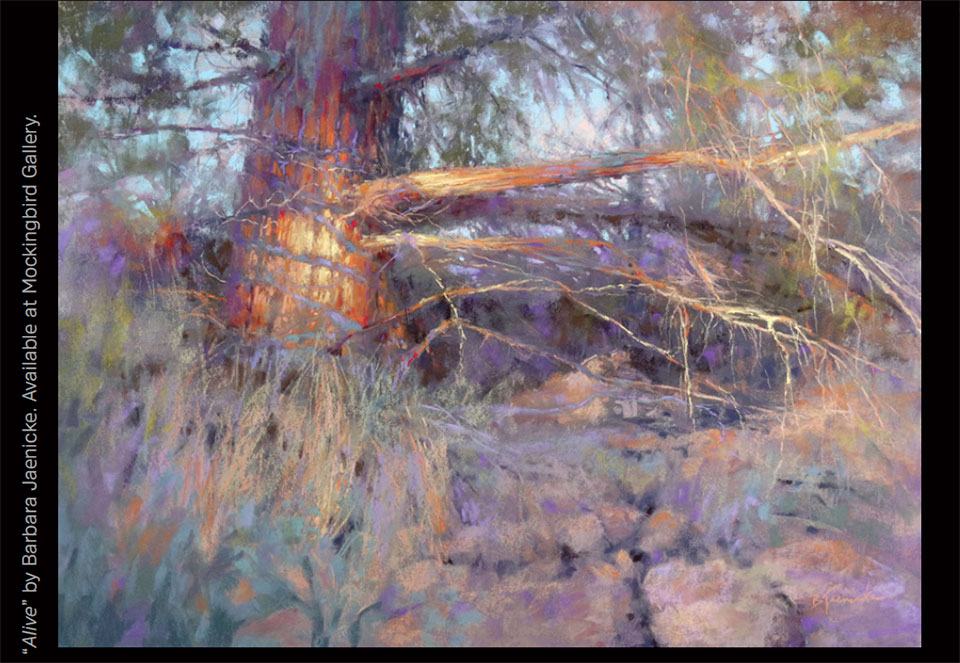
In 2007, after 20 years in Scottsdale, Jim and Nathalie moved on to Bend to raise a family and were able to buy the Mockingbird Gallery from its original owner. With their hard-work mentality and commitment to excellence, the Mockingbird represents a blend of diverse artists for art collectors, art aficionados, and art lovers. Today, Mockingbird represents 48 unique and accomplished artists. “In order to do that and do that right, you have to push hard in order to fulfill your obligations to these artists. We work for the artists,” says Jim. “We have to earn the trust and respect of artists and build a solid, working relationship with them—we’re all partners.”
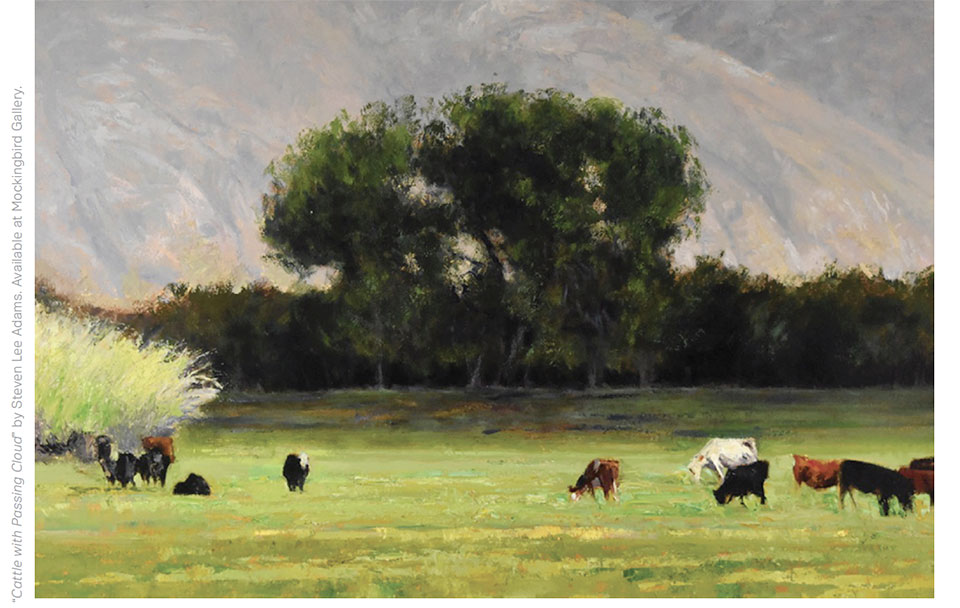
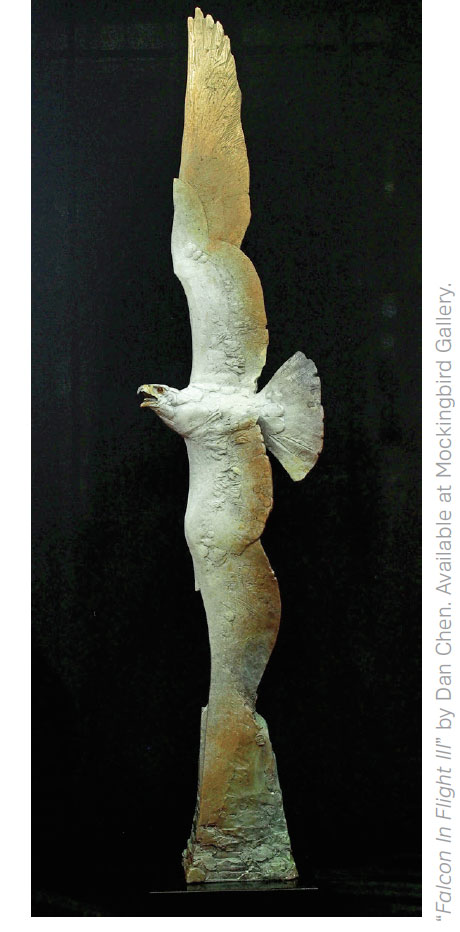
Jim’s passion for art and his undeniable desire to seek out artists who fit the Mockingbird’s vision is an important part of the gallery’s appeal and success. There are times when established artists seek out representation at Mockingbird, which Jim values even more. “We’re a traditional and representational gallery. Some of our representational artists are close to being abstract and contemporary artists and some are crisp realists,” he says. “Something magical happens when you walk through the doors of Mockingbird Gallery. There is a trend right now for modern and contemporary art, but when curious art folks walk into a representational and traditional art gallery like ours, they stop and look around and tell us how much they like everything, especially people coming from Portland who come to enjoy themselves in Bend.”
Mockingbird Gallery is pleased to feature new work for June 2020 by sculptor Dan Chen from Eugene, Oregon, and Hamilton, Montana’s palette knife painter Troy Collins. “Dan Chen is celebrated for his wildlife and animal subject creations in a variety of mediums, but we’re probably best known for the handling of his bronze sculpture works,” says Jim. “Troy’s landscapes are full of color and texture. It’s a treat to bring them together for an exhibition.”
“Right now, Bend is a thriving marketplace. It’s great to be here as a fine art gallery and be part of a community that is growing in a positive direction. It’s exciting.”
—Jim Peterson
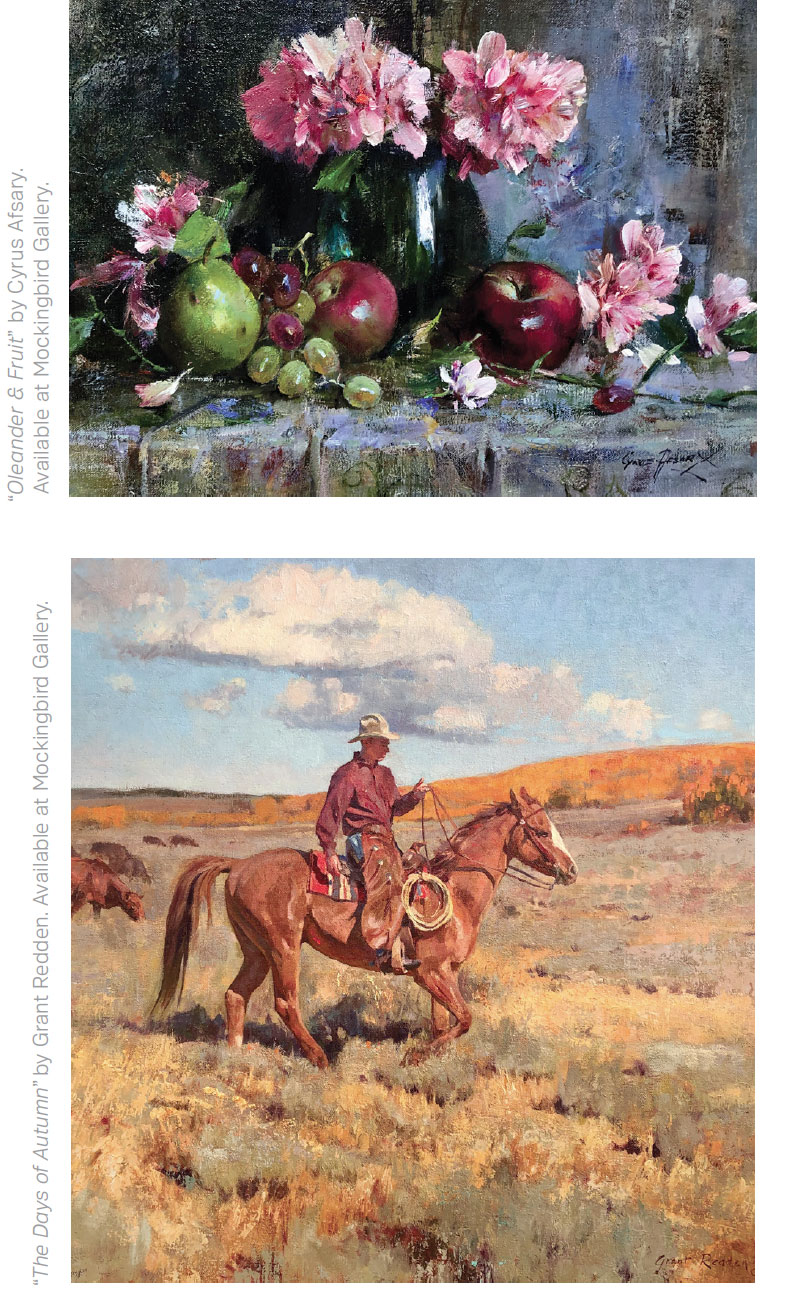
For July 2020, the Mockingbird Gallery will celebrate its existence of 30 years. A 30th anniversary show will include a printed catalog and a purchase-by-draw group exhibition with all 48 artists creating original works of art for the show. In addition, the gallery has invited five guest artists to participate. “This is an important show,” says Jim. “We want to honor all the artists who make us so special and also honor the collectors who have supported us along the way.” A big celebration will ensue with gallery artists, collectors, and others for a catered event to celebrate this milestone.”
In August 2020, Mockingbird will feature some of the gallery’s best Western art with four artists including G. Russell Case, Grant Redden, Eric Bowman, and Eric Jacobsen. For September, the gallery will exhibit works by pastel painter Dawn Emerson and Hib Sabin, a renowned sculptor, who will be present for a book signing on his newly released book about his life and work. Mockingbird Gallery takes a great deal of pride in representing some of the West’s most recognized and acclaimed artists who are part of their gallery. “It’s wonderful when you can build relationships with artists,” says Jim. “It’s a symbiotic relationship with the brick and mortar gallery and the artists who are represented. We depend on each other and learn to trust the process. We know as a gallery that we would be nowhere without the talented artists we represent. It gives us great pride to provide our artists and our collectors with the best fine art experience possible.”
The High Desert Museum
Understanding the Attraction of Ed Anderson
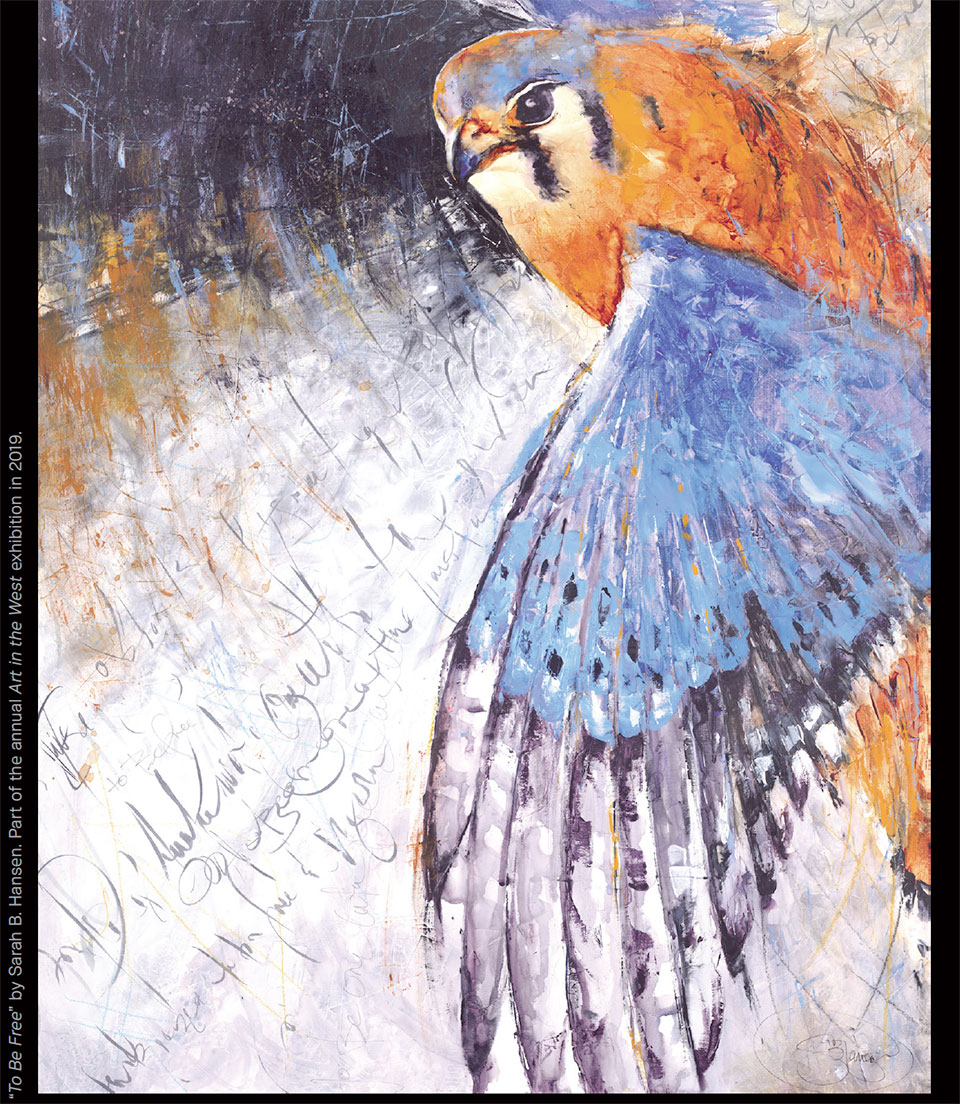
In a world that is seemingly moving at light speed, we can all take a pause and enjoy the connection to life offered at the High Desert Museum, located just south of the city of Bend. In a day at the Museum, visitors can learn about the High Desert through playful otters, live characters at a 1904 ranch, stories of the Indigenous people of the region, and daily programs. They can also connect to a vibrant arts scene, as the Museum regularly features dynamic exhibitions weaving in historical and contemporary art.
“The Museum tells the story of life in the High Desert through art, culture, science, and history,” says Director of Communications Heidi Hagemeier. “We take all these threads and weave them together to tell a textured, rich story about this dynamic place.”
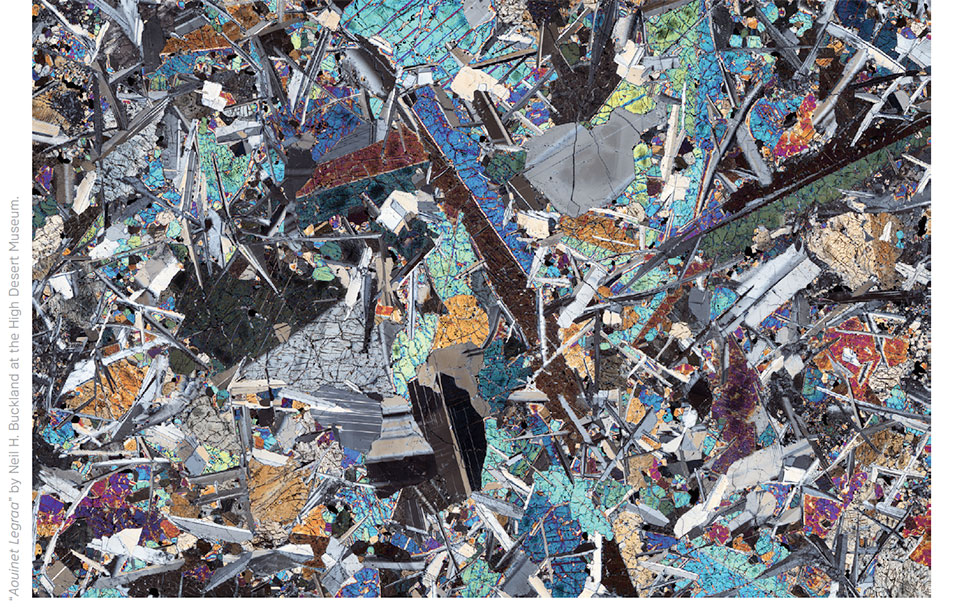
The High Desert Museum, which opened in 1982, sits on 135 wooded acres with more than 100,000 square feet of exhibition space. Through indoor and outdoor exhibits, native wildlife in natural habitats and living history, the Museum provides patrons with the ability to discover and appreciate the diverse region of the Intermountain West’s High Desert, which covers eastern Washington to southwest Idaho and into Nevada and Utah.
“There’s always something new to see and experience at the Museum. Our rotating exhibitions connect to the museum’s mission to tell important stories about the high desert.”
—Heidi Hagemeier
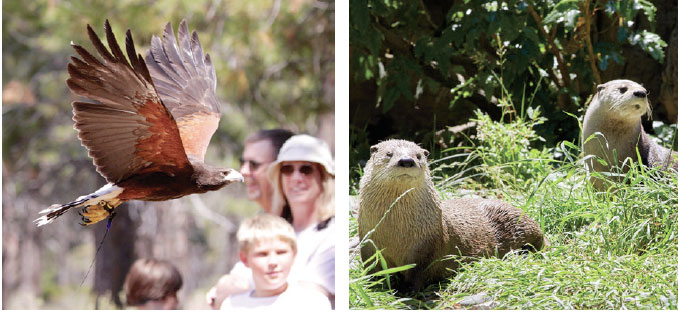
“Our living wildlife collection includes raptors, otters, and desert dwellers such as tortoises and pond turtles. There’s quite an array,” says Heidi. “In the summer we present an educational flight program, Raptors of the Desert Sky, in which raptors such as owls and turkey vultures swoop in and out of a natural amphitheater.”
“There are a number of exhibitions that are permanent and nine rotating exhibitions through three spaces,” says Heidi. “There’s always something new to see and experience at the Museum. Our rotating exhibitions connect to the museum’s mission to tell important stories about the High Desert, which is always an overarching theme.”
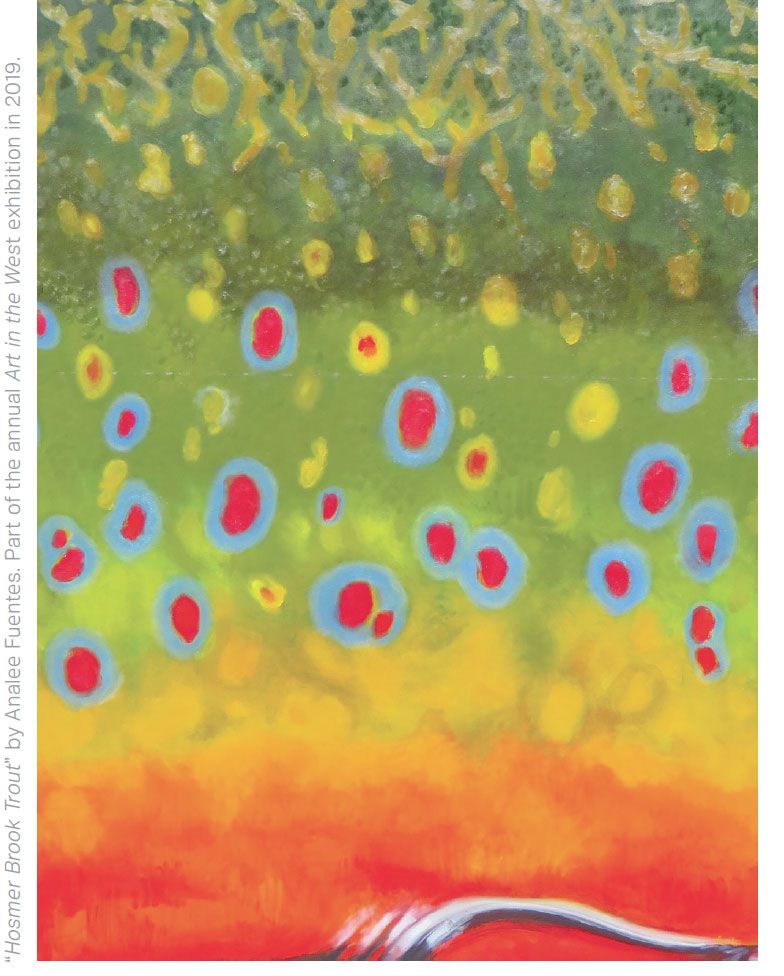
A current temporary exhibition, Natural Wanderment: Stewardship. Sovereignty. Sacredness., March 20–July 12, 2020, shares the imagery of current Indigenous people. Photographer Matika Wilbur has been traveling the nation to photograph Indigenous people from all 566 federally recognized tribes as part of Project 562. The results are stunning images that celebrate the cultural traditions of Native people while also showing that they are part of the modern-day world. Matika Wilbur’s portraits are accompanied by personal stories of the individuals photographed.
Another current, original Museum exhibition is Infinite Moment: Burning Man on the Horizon, on display through October 4, 2020. Infinite Moment explores the ways that the High Desert enables and empowers the art and community of Burning Man.
Since 1990, the annual event, which takes place on the Black Rock Desert in northwest Nevada, also known as the playa, transforms an otherwise empty, isolated, and harsh desert landscape into a temporary city of 80,000 people for eight days at the end of the summer. Hundreds of art installations are created and erected. Some are colossal works of art, leading to the reference of Black Rock City as a “crucible of creativity.” A focal point of the event is the central Man structure, which is burned at the culmination of Burning Man, and has at times reached over 100 feet.
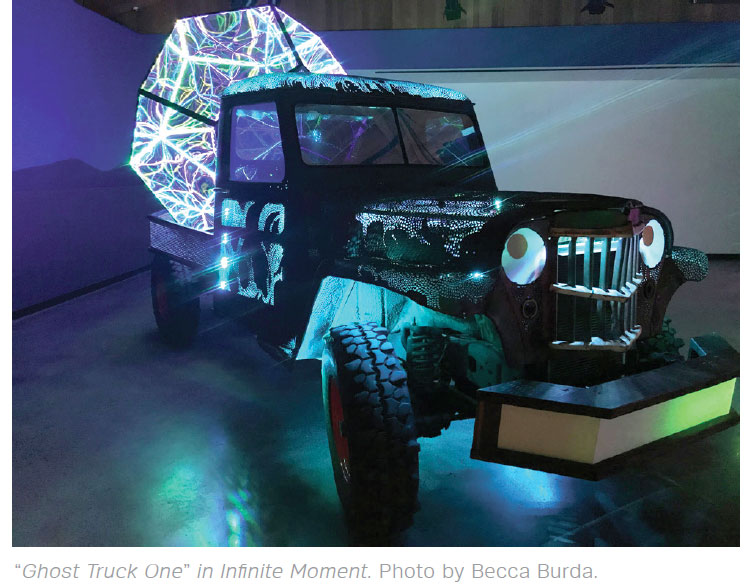
“The culture, community, and self-expression that exists at Burning Man is truly unique,” tells Heidi. “Some of the art is multi-stories-high, meant to be climbed on or played with, and figured out. Then, at the end it all vanishes without a trace.”
“There are some art pieces that do have a life after Burning Man. An exhibit has traveled to a number of museums. For the High Desert Museum, this exhibit illuminates the culture going beyond the stereotypes and brings understanding to it. It also shares some of the joy and exploration that is a celebrated part of the Burning Man experience through artwork and hands-on exhibit elements.”
The Museum sent three of its staff to experience this past year’s Burning Man, including Senior Curator of Western History Laura Ferguson, Ph.D. “We were able to witness firsthand why the experience is so meaningful to those who take part,” says Laura. “It was amazing to see the playa transformed and to explore art in new ways.”
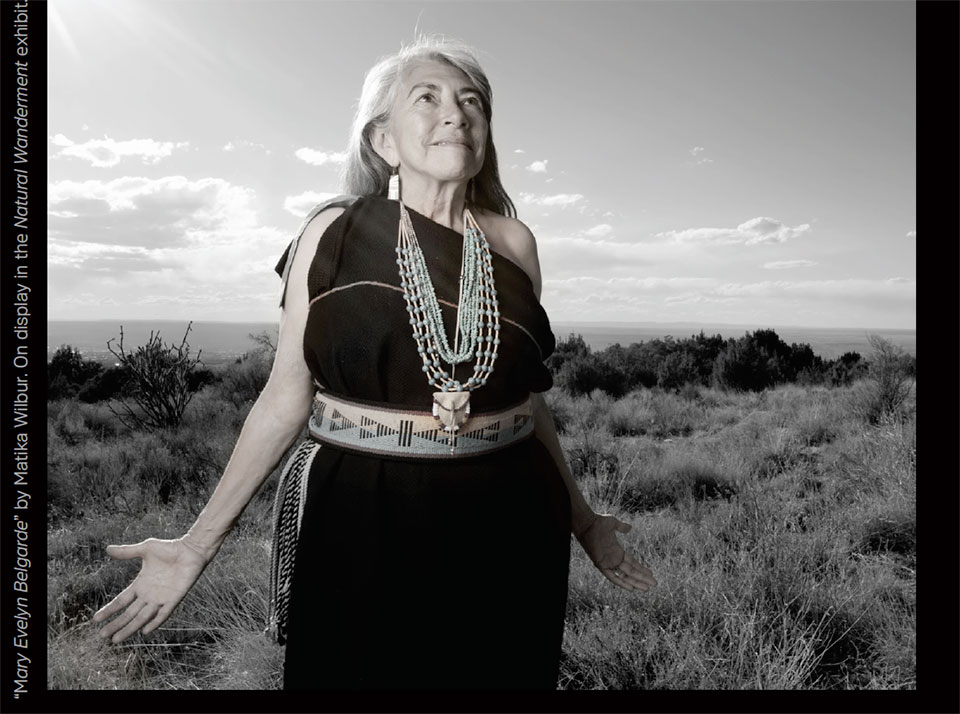
Heidi explains that outside of the exhibition there’s text about the history and the ten principles behind Burning Man: Radical Inclusion, Gifting, Decommodification, Radical Self-reliance, Radical Self-expression, Communal Effort, Civic Responsibility, Leaving No Trace, Participation, and Immediacy. These principles are core to the Burning Man experience and the Museum exhibit. The harsh environment of the desert playa, known for dust storms that lead many “Burners” to keep goggles and masks at the ready, challenges humans at the same time that it creates a space for the community. The vastness of the Black Rock Desert provides a unique backdrop for art, allowing for large-scale pieces that take shape and transform according to the elements and position of the sun. After sunset, the structures glow with vibrant lights and the desert is filled with a cacophony of sound.
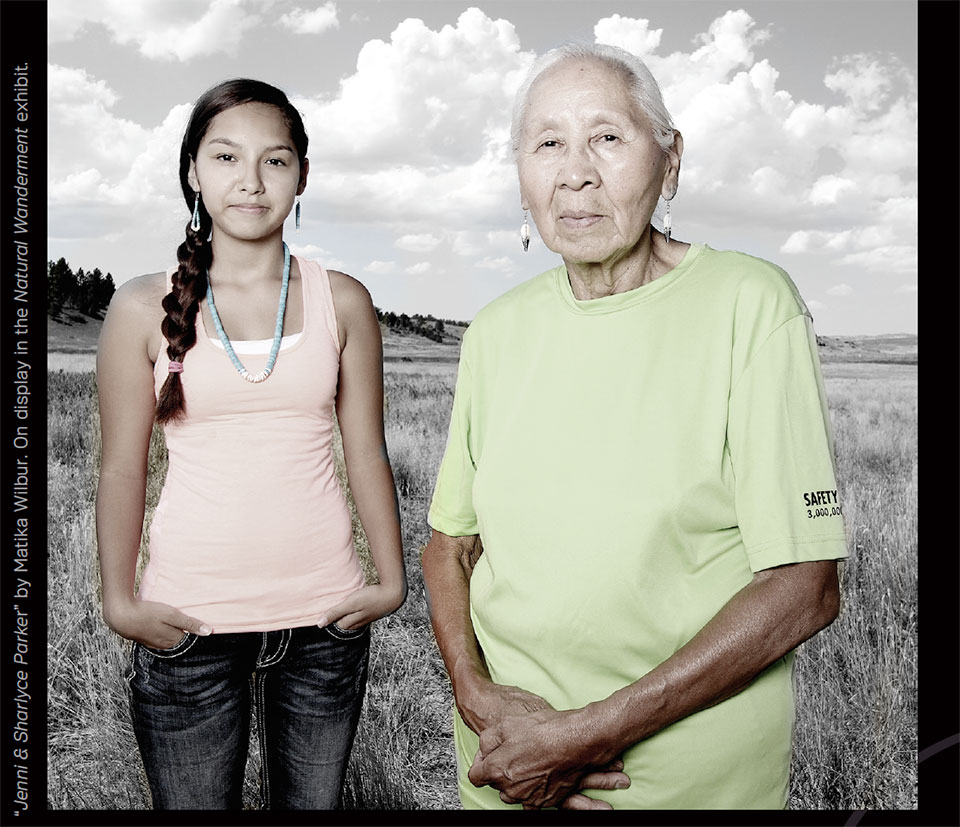
Celebrating artists is also an annual fundraising event for the Museum. Art in the West, July 18-August 29, 2020, is a juried art exhibition. The artworks are for sale, with proceeds benefiting the Museum. Last year, more than 75 works, including sculptures and paintings ranging from oil to acrylic to mixed media, and photography, express invited artists’ responses to the landscapes, history, cultures, and wildlife of the High Desert.
“Art in the West exhibits two- and three-dimensional, original artworks,” says Heidi. “It is a juried show illuminating the American West.”
Offering an experience of wonder for knowledge, learning, and interests for members, guests, and Bend residents, the High Desert Museum’s tranquil setting and variety of engaging exhibitions allow a visitor to enjoy the Museum on several cultural and immersive levels.
highdesertmuseum.org
Copeland Gallery
Indulge your Sense of Adventure & Beauty
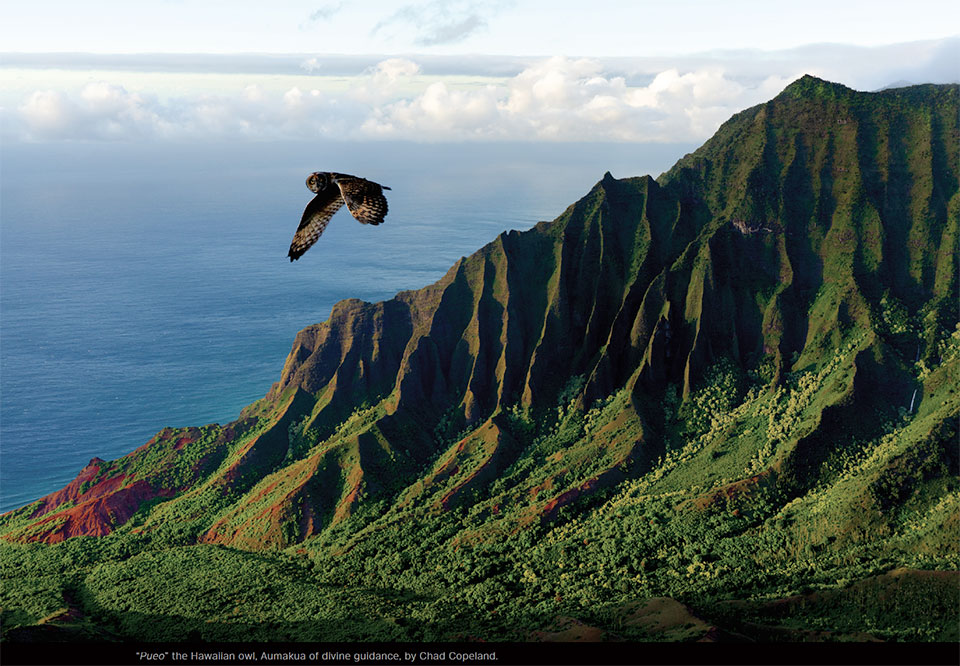
As a young boy from the small town of Pocatello, Idaho, Chad Copeland stumbled upon an object sitting on his family’s 1970s-era coffee table that would change his life. It was a Polaroid camera that became a magical device through which the award-winning National Geographic photographer and filmmaker would learn to see the world.
There wasn’t a line item in the Copeland family budget for film or budding photographers. But you know that proverb about mothers and necessity and invention. “My mom encouraged me to imagine the pictures I could capture,” says Chad. And so he did. She also might have said something like, “go play outside,” not realizing that he would someday create a stunning body of photographic work documenting his time in wild places.
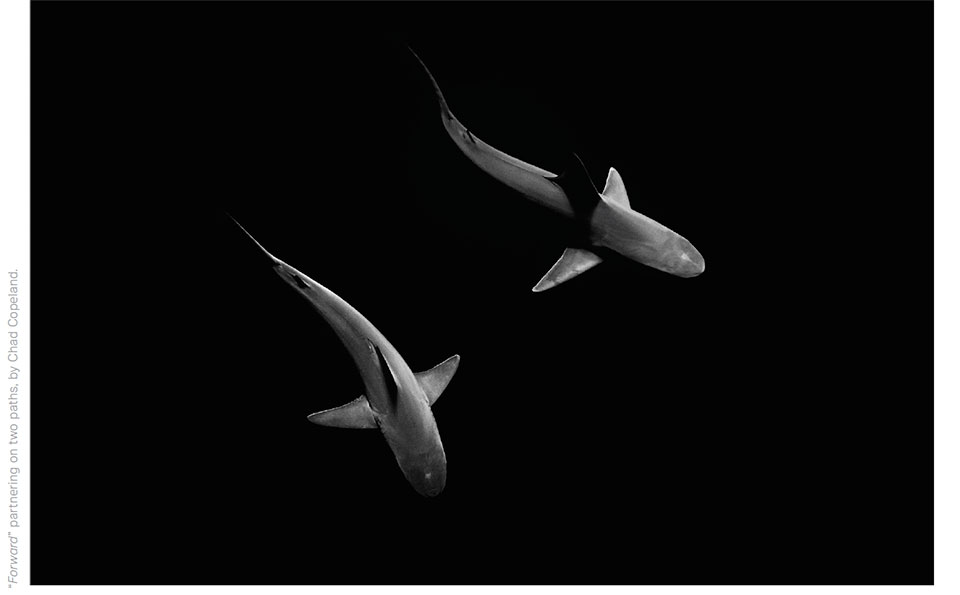
“I’ve always felt at home in the wild,” Chad shares. His hunger for adventure travel most likely started as a result of his excursions through a beloved forest surrounding the family cabin on the snaking Sun River in Montana. “I learned how to blend into my surroundings as a hunter would,” he explains. “The surprise and exhilaration of my first wildlife encounters,” including a Cinnamon Grizzly at the age of 10, “filled me with a desire to become like a gentle gust of wind—barely noticed.”
Chad’s first career as a pilot with the Air Force was a strong influence on his photography. But it was flying above the 49th state that brought his passion for wilderness, aerial perspectives, and photography together. Captivated by the possibility of capturing the beauty he saw from his unique vantage point, he worked vigorously to create a “camera in the sky.” Before long, he recorded video and captured stills from cameras that he mounted to radio-controlled aircraft, which today is more commonly known as a drone.
In 2015, Chad got the lucky break that would lead to his full-time vocation. Shortly after he met Keith Ladzinski, his now friend and colleague, Keith told National Geographic about Chad’s experiments with unmanned aircraft affixed with cameras. “They invited me to join Carsten Peter in China’s remote Stone Forests,” he says, clearly still awed by the opportunity. His first professional assignment was an epic six-week adventure filming and photographing professional climbers Emily Harrington, Matt Segal, and Cedar Wright. “I flew 40 missions using a 10-pound carbon fiber (FreeFly Systems) Cinestar Octocopter drone,” he says. He’s been doing what it takes to get the shot—his way—ever since.
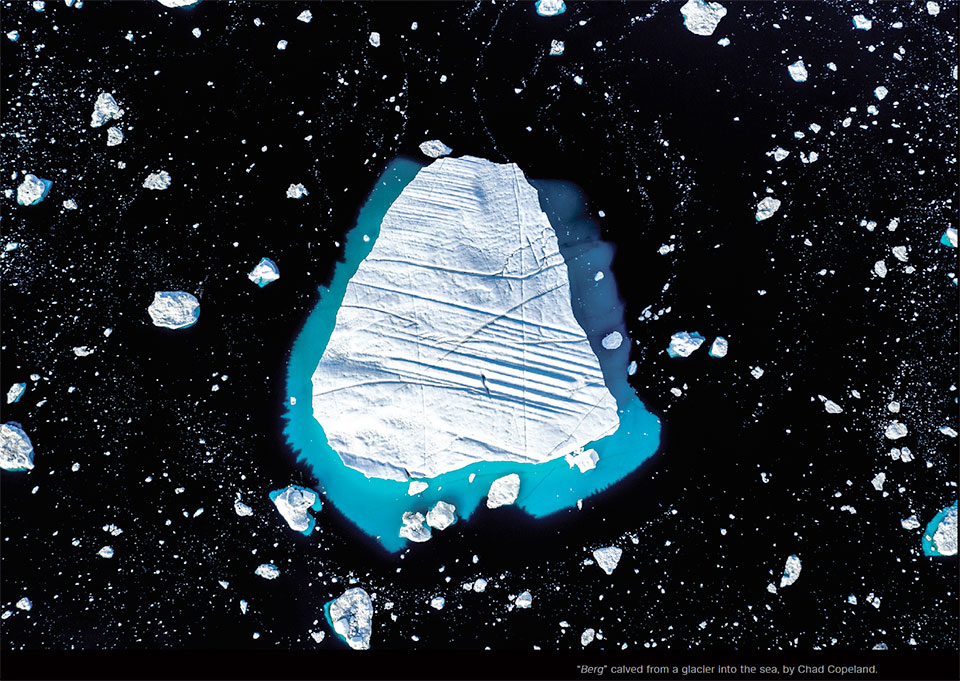
“My work is often created in solitude. When you give yourself to the wild, nature always gives back. I want to share moments with people and invite them to become a part of a bigger story as collectors.”
—Chad Copeland
Recently settled in Bend, Chad and his wife and business partner, Brooke Copeland, are tag-teaming to make a big impression on the region. Their latest projects include Copeland Gallery, a fine art photography gallery and a 7-Episode film series, Adventure Calls, that captures what Chad calls, “The Adventure Culture” and lifestyle of Central Oregon.
Brooke takes the lead in managing the newly opened Copeland Gallery from the iconic Village at Sunriver, just south of Bend. “It was time for more people to experience the beauty of Chad’s work and the way he sees the world,” says Brooke. “His body of work includes a collection of abstract, landscape, and wildlife subjects that can completely change the mood of a space,” she continues. Brooke, a native Oregonian, enjoys establishing Chad’s work with collectors, interior designers, and homeowners looking to enhance the style and character of any environment. She has plans to expand into commercial spaces in 2020.
“I love connecting people to art. I’m very passionate about meeting people and creating a personalized experience that fosters a connection with Chad’s work,” she says. “Chad’s work is very intentional, and viewers often describe feeling the emotions that Chad felt when he captured an image.”
As fine art, Chad’s photography creates an aesthetic that transforms. A visit to the gallery is a quick reminder that there is a distinctive difference between the phone camera images that fill the feeds of visually-based social media platforms like Instagram and the trained eye of an artist.
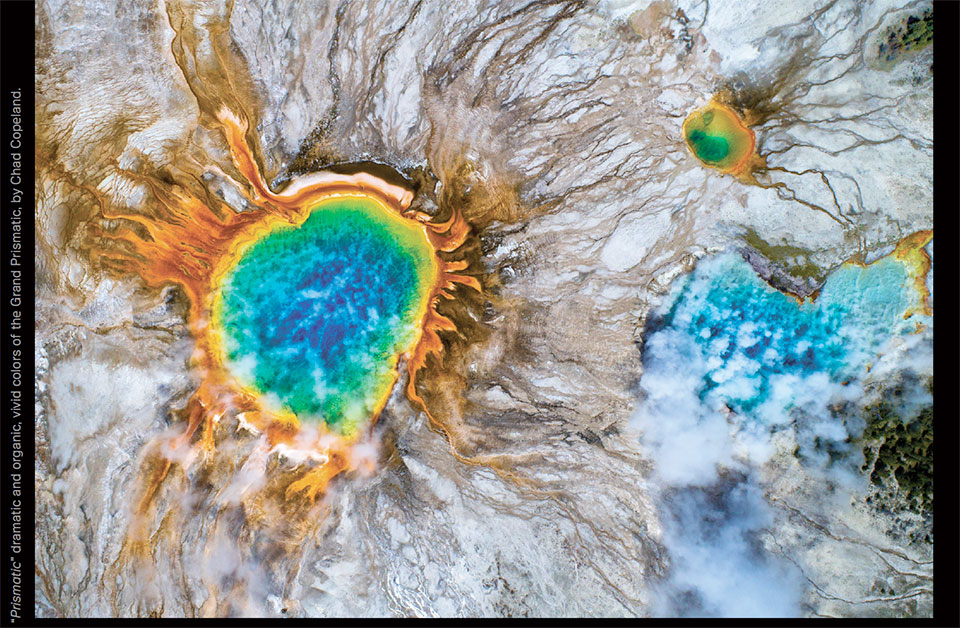
Chad’s larger photographs, printed on Fuji Crystal Archival Paper with acrylic glass framing, create a three-dimensional sensibility. “I want people to teleport into a moment,” Chad says. “My work is often created in solitude. When you give yourself to the wild, nature always gives back. I want to share moments with people and invite them to become a part of a bigger story as collectors.”
Copeland Gallery presents several types of prints: Open Series, Master Series, Collectors, and Legacy Series. The Legacy image is called “PUEO.” It is named for the endangered Pueo owl on the island of O’ahu, the owl is a short-eared, rare, and rarely-seen raptor. It is considered an ancestral guardian and a spirit animal for many, the Aumåkua in Hawaiian mythology. Chad describes the good fortune of being present to capture a moment that tops his list of photographic achievements. He describes the experience: “Standing 3,000 feet above the Nå Pali Coastline watching clouds roll over the ridgeline illuminated by the light of the golden hour. I’ll never forget those big yellow eyes looking back at me.”
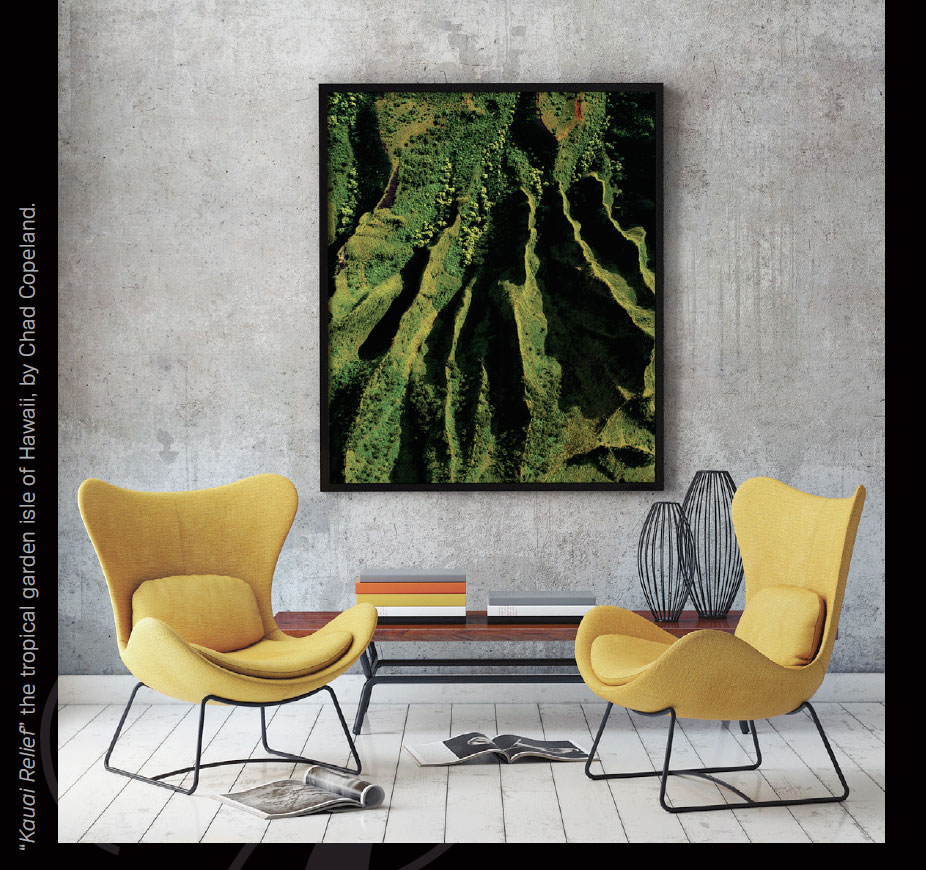
“Chad’s work is very intentional, and viewers often describe feeling the emotions that Chad felt the moment he captured an image.”
—Brooke Copeland
In addition to wildlife, landscapes, and images of natural history, Chad captures iconic landscapes in an abstract manner, inviting viewers to see familiar scenes through a fresh perspective. These images, in particular, create a sense of mystery and provide rich texture, and an organic, often geometric aesthetic that modern buyers are looking for.
As a contributing photographer and director to National Geographic, BBC’s Planet Earth series, Men’s Journal, and numerous other publications, Chad’s adventure-sense abilities and expert photography continue to present stories that few are able to experience. He has also produced and directed feature content for the 2016 NBC Olympics, NETFLIX Original Series, Top Golf, ESPN, TESLA, the Seattle Space Needle, and a wide array of other global clients, which has contributed, amongst a great deal of his other work, to his many international awards and recognition.
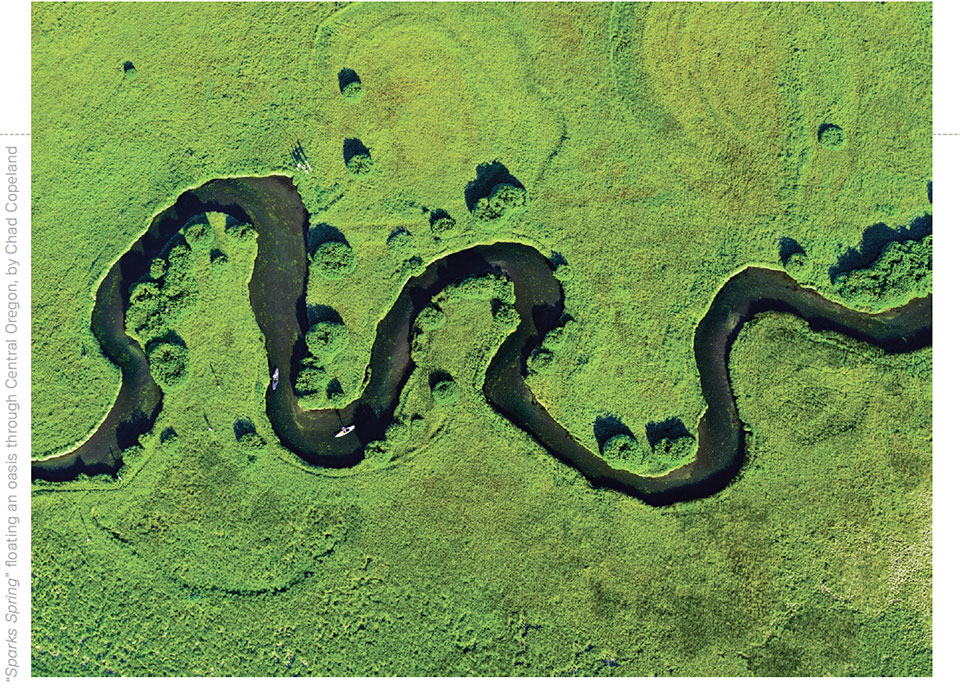
Collecting Photography is an Art in Itself.
Private and commercial collectors can choose from several categories of prints that will fit a range of budgets. Art consultations are available to advise property owners, hotels, and corporate buyers.
Masters Series art pieces are limited edition prints carefully curated from millions of images captured by Chad.
Collectors art pieces are rare captures by Chad that can not be replicated. They are moments in time captured by Chad that represent an extraordinary connection with nature and wildlife.
Legacy Series are “Pueo” images and rare, one-of-a-kind images taken at the right time and place. These are Limited Print runs of 100, which are numbered and authenticated by Chad and complimented by a commemorative book. There are also 5 very limited Artist Proofs with prices increasing as fewer works are available. | copelandgallery.com
